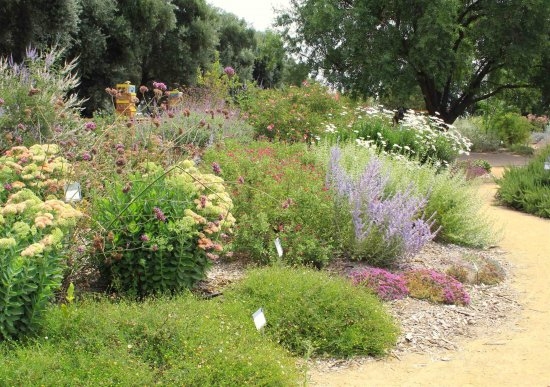An acquaintance recently told me about a favorite and once thriving shrub that was in serious decline. The problem: over time, branches from a nearby tree had grown and spread so widely that they were shading out the sun-loving plant. The only viable options: severely prune back the mature tree and destroy its structure, or risk digging up the mature shrub and transplanting it to a more favorable location. A major change was needed.
As ambulatory beings, we human beings are fortunate. If an environment is unhealthy or not to our liking, we generally have the option of walking away and putting ourselves in a better place. Not so with plants. They are permanently rooted to one spot—unless we move them—and they must adapt and thrive or wither and die.
In a natural setting, plants are completely at the mercy of environmental factors, living to old age only if conditions are favorable. On the other hand, plants growing in a garden setting rely on their human caretakers to provide for their needs: proper sun exposure, healthy soil, adequate water and nutrients. We must be vigilant over time, watching as plants grow and conditions change, because a landscape (like a growing child) is a living, dynamic, ever-evolving thing.
Commercially-grown plants have been raised under optimal conditions, with carefully scheduled watering and fertilizing, precisely engineered soil mix, efficient pest control, and constantly monitored air circulation. Once they make their way from grower to nursery to home, they must usually contend with less than ideal circumstances.
Annual plants—with lifespans of only a year—usually manage to complete their life cycle even if we mistakenly plant them in a poor place. But other plants—long lived trees, shrubs, and other perennials—need to be monitored to ensure that they remain healthy over the long term. It's an approach equivalent to an annual medical exam.
To ensure that your garden thrives, begin by following the principle of “right plant, right place.” Each species of plant evolved in its own niche in the world, and thus has its own preferences for soil type (loamy, sandy, clayey, rocky), sun exposure (full sun, partial shade, full shade), water needs (low, moderate, high), heat and cold tolerances, and more. If you duplicate these conditions as much as possible and choose a planting location carefully, your chances of success are high.
Another element of the “right plant, right place” concept involves space. Each type of plant grows to a specific size when mature, so you should take this eventual size into consideration when formulating a planting plan.
A well-planned landscape should look somewhat sparsely planted in the first year or two. Once plants are well established, they will soon grow to fill in the empty space. Plants that aren't given adequate space at the outset soon become overcrowded, and this leads to a host of problems: a need for excessive shearing or pruning, which stresses and destroys the natural form of plants; poor air circulation, which can encourage rot or pest infestations; and competition for limited soil nutrients, which results in sickly looking plants or a need for too-frequent fertilizing. (Many commercial landscapes suffer from such overcrowding; they're planted densely to avoid any bare look from the outset, and that initially pretty appearance steadily declines in subsequent years.)
One approach is to think of a garden as a metaphorical neighborhood. Gardens tend to be at their best when plants are grouped with others that have the same or similar growing conditions, and when they are given space to be themselves. Would you choose to live in a crowded area with aggressive, hostile neighbors? (Wrong place.) Or would you rather be in a place with some space, with like-minded and/or respectful neighbors? (Right place.)
People and plants are alike in many ways. An outdoorsy, sun-loving person won't thrive in a dark and gloomy office. Someone who prefers cool, shady climates will wilt if relocated to a hot place. Those from dry locales can quickly become depressed when spending time in a rainy, soggy environ. Such comparisons can be extended to the plant world. All living things have specific and very individual needs in order to flourish.
Before you choose a plant, consult a reputable source such as the Sunset Western Garden Book, a knowledgeable nursery professional, or a horticulture specialist. If the size of your site and the planting zone and conditions coincide with the plant's needs, chances are it will be happy once it's in the ground… and it will be a beautiful day in the neighborhood.
For gardening-related questions, call the UC Master Gardener office at 209-953-6112, or use our website: http://sjmastergardeners.ucanr.edu/CONTACT_US/.
